What's Shaking in Your Classroom?
The Smithsonian Science Education Center (SSEC) offices are a block off the National Mall. In our offices, we can hear and feel trains go by. Those in offices closest to the tracks can tell the difference between commuter trains and freight trains without looking. How can we tell the difference?
 The tracks that run next to our building are used by several freight and passenger train systems. MJB Rogers
The tracks that run next to our building are used by several freight and passenger train systems. MJB Rogers
Phenomena are things that make you wonder what’s going on—how or why something happens. In the science classroom, phenomena are used to spark interest and drive learning.
Why would your students care about a phenomenon like feeling trains near the SSEC offices? They probably wouldn’t. But you can find your own phenomena that are pertinent to your students. Look around the school or community. Listen to what students are talking about. Pay attention to the news.
Here are some vibration-related phenomena that may just get you and your students wondering.
It’s feeding time at the zoo. Tami needs to stack blocks to reach her favorite treat, but other animals are running by and the resulting vibrations are making her tower fall. In a new online game from the SSEC, early elementary students can investigate shapes and stable stacking configurations as they help build Tami’s Tower.
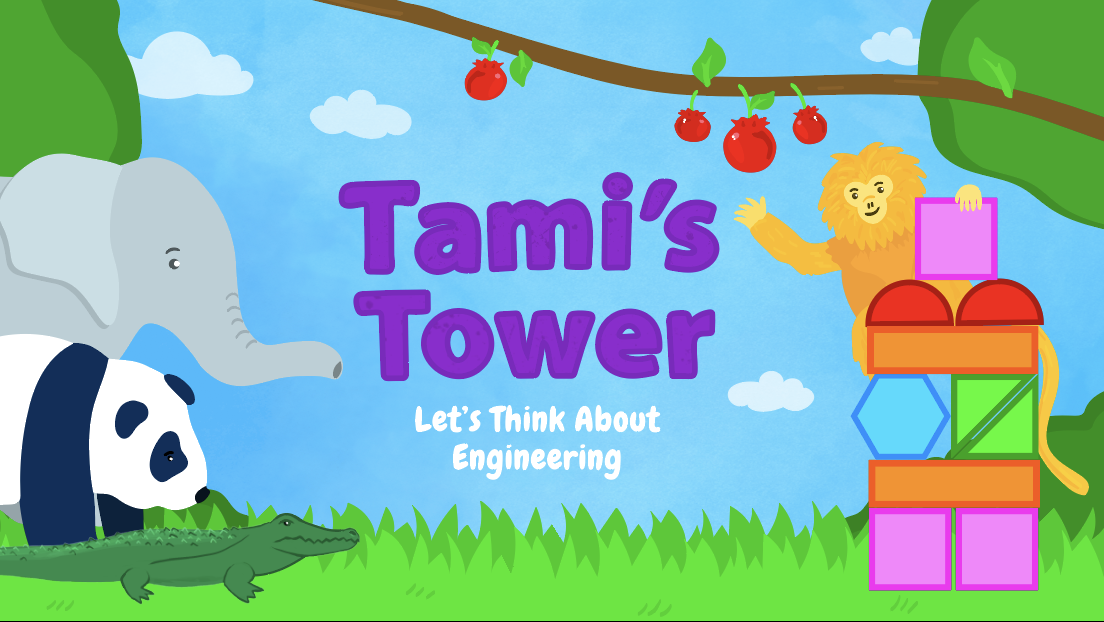 Tami's Tower: Let's Think About Engineering is an engineering design game from the SSEC.
Tami's Tower: Let's Think About Engineering is an engineering design game from the SSEC.
Did you know that you can feel and hear vibrations coming from a musical instrument? There’s a first-grade Smithsonian Science for the ClassroomTM module all about that: How Can We Send a Message Using Sound? Students can investigate this further through Smithsonian Science for Makerspaces: Match the Pitch!
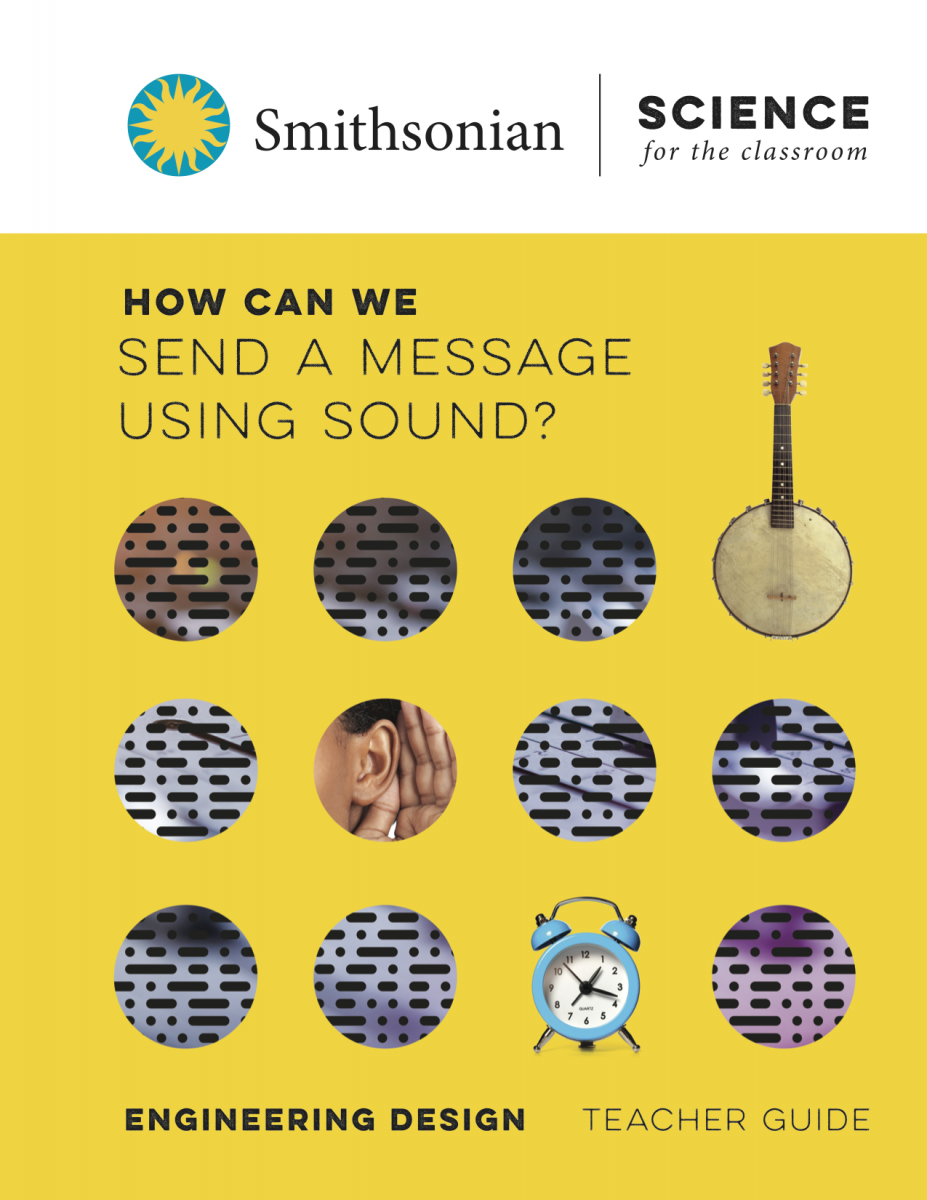 How Can We Send a Message Using Sound? is a grade 1 module in Smithsonian Science for the Classroom.
How Can We Send a Message Using Sound? is a grade 1 module in Smithsonian Science for the Classroom.
 A 3D printed model of a guitar from Smithsonian Science for Makerspaces: Match the Pitch!
A 3D printed model of a guitar from Smithsonian Science for Makerspaces: Match the Pitch!
How can people be made safer during the vibrations of an earthquake? An engineering thread in What Is Our Evidence That We Live on a Changing Earth? has fourth-grade students design, build, and test model earthquake-resistant buildings.
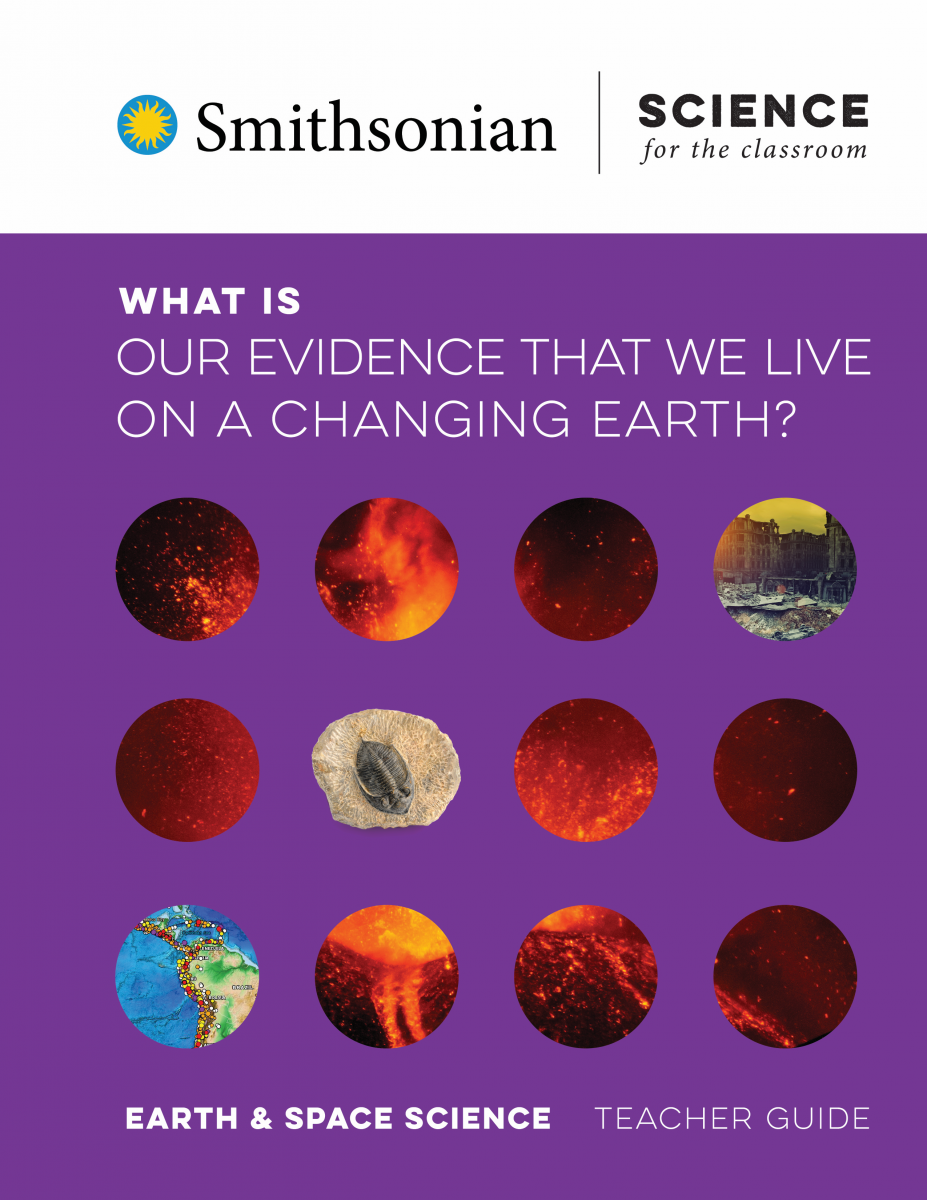 What Is Our Evidence That We Live on a Changing Earth? is a grade 4 module in Smithsonian Science for the Classroom.
What Is Our Evidence That We Live on a Changing Earth? is a grade 4 module in Smithsonian Science for the Classroom.
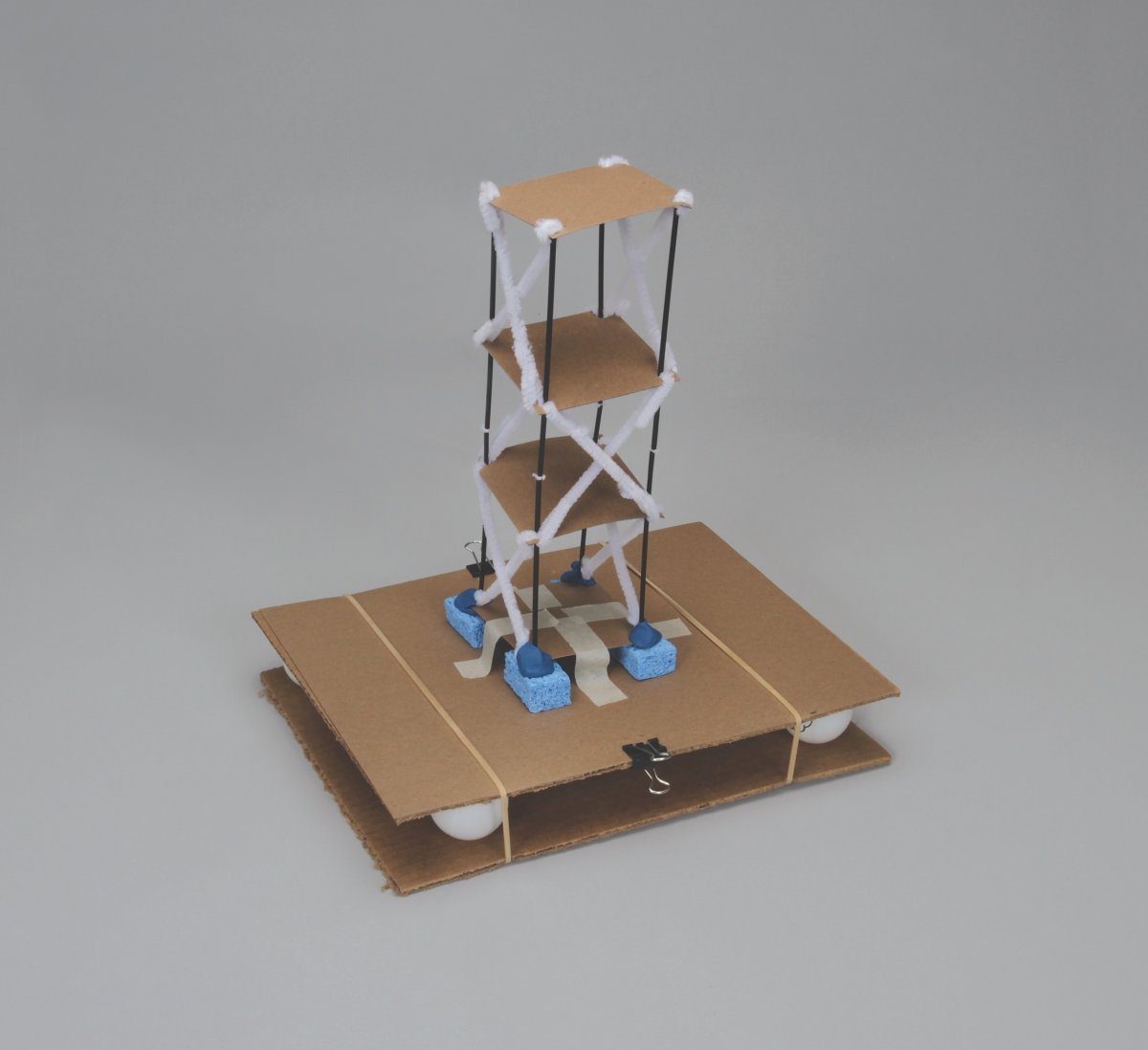 This earthquake-resistant building model is designed to meet specific constraints in the grade four module. Carolina Biological Supply Company
This earthquake-resistant building model is designed to meet specific constraints in the grade four module. Carolina Biological Supply Company
Astronauts need to exercise to maintain health on orbit. Vibrations can be felt throughout their spacecraft when they run on treadmills or ride stationary bikes. These vibrations can affect scientific experiments, so sensors are installed to measure the shaking. Can you design a system to protect sensitive experiments from vibrations?
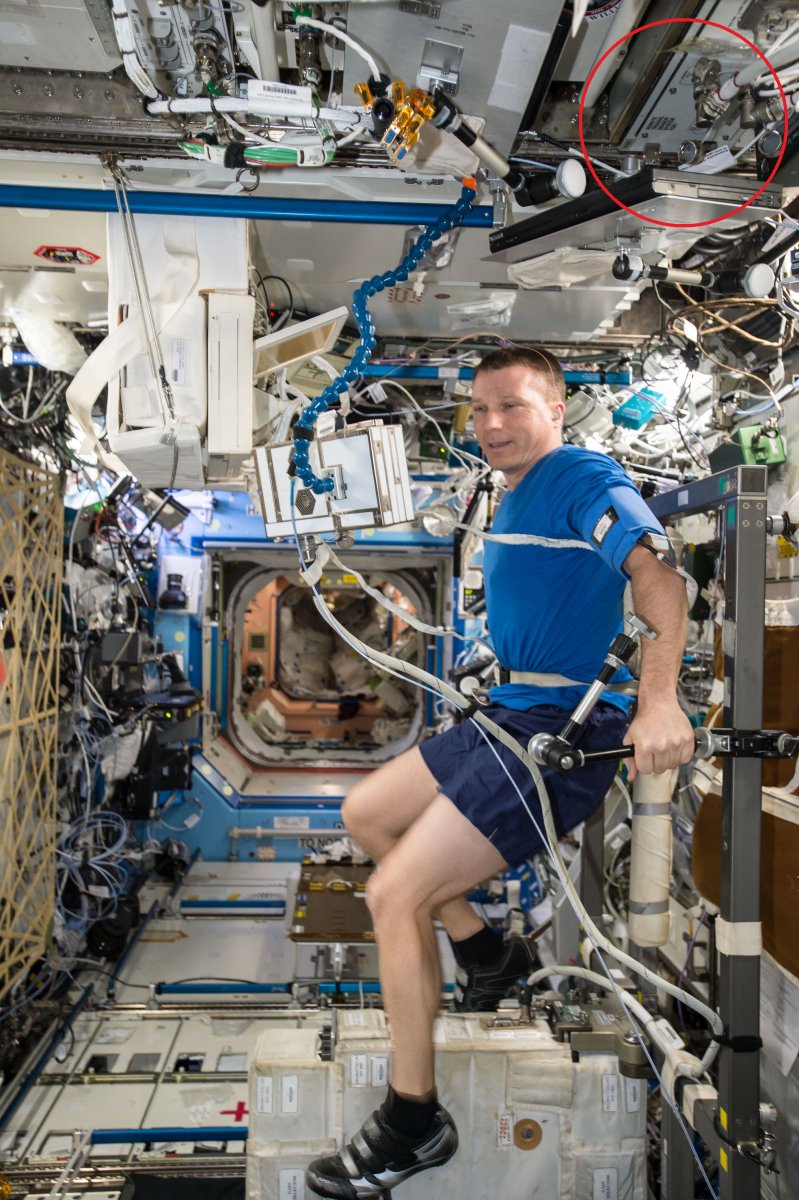 Terry Virts exercises on a bicycle ergometer on the International Space Station. The Space Acceleration Measurement System, or SAMS (circled), in the Destiny module measures the resulting vibrations. Examples of crew exercise equipment and SAMS units are on display at the Smithsonian National Air and Space Museum. NASA
Terry Virts exercises on a bicycle ergometer on the International Space Station. The Space Acceleration Measurement System, or SAMS (circled), in the Destiny module measures the resulting vibrations. Examples of crew exercise equipment and SAMS units are on display at the Smithsonian National Air and Space Museum. NASA
Students can read more about “Living in Microgravity” in Smithsonian Science Stories Literacy Series: Sailing under the Stars. This student reader is part of the fifth-grade module: How Can We Use the Sky to Navigate?
 Sailing under the Stars is a grade 5 reader in the Smithsonian Science Stories Literacy Series.
Sailing under the Stars is a grade 5 reader in the Smithsonian Science Stories Literacy Series.
The Smithsonian Science for the ClassroomTM elementary modules are designed to engage, inspire, and connect students firsthand to the world around them. And that starts with a phenomenon. What are your students wondering about today?